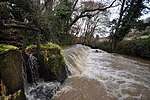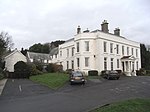Pilton is a suburb of the town of Barnstaple, it is located about quarter of a mile north of the town centre, in the civil parish of Barnstaple, in the North Devon district, in the county of Devon, England. It was formerly a separate village. The civil parish of Pilton West covers the more rural parts of the ancient parish of Pilton that have not been incorporated into the town of Barnstaple. In 2009, the Pilton (Barnstaple) ward had a population of 4,239 living in some 1,959 dwellings. It has its own infants and junior school, houses one of Barnstaple's larger secondary schools, and one of Barnstaple's SEN specialist schools. North Devon Hospital is also within West Pilton parish. It has a Church Hall, two public houses, two hotels, and residential homes. It has residential estates of both private and public housing including flats. It also has a historic Church that dates back to at least the 11th Century.
It was once separated from the adjacent town of Barnstaple by the River Yeo. Sir John Stowford (born c.1290 died c.1372) of Stowford, West Down. Chief Baron of the Exchequer built Pilton Causeway which links the town of Barnstaple and village of Pilton, which were then separated by the treacherous marshy ground in which flowed the tidal meanders of the small River Yeo. It is recounted by John Prince (1643–1723), that Stowford decided on building the causeway when on his way from his home at Stowford, north of Pilton, to Barnstaple, he met whilst fording the Yeo the drowned bodies of a woman with her child. He is also believed to have contributed to the financing of the long-bridge in Barnstaple.










